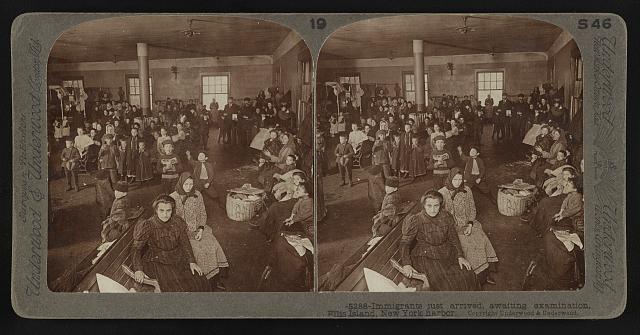There are four ways to immigrate to the U.S. legally. They all come with restrictions that make these pathways difficult, if not impossible, to use for undocumented immigrants.
1. Family
How it works: A U.S. citizen or a lawful permanent resident can petition for an immediate family member. This means a spouse, parent, child or sibling. A person must be 21 to petition for a family member.
The problem: This works only if the person they are petitioning for is not already living in the U.S. In the 1990s, Congress created a penalty for people without legal immigration status who stay in the U.S.
If a person has lived in the U.S. for more than a year without legal status, they will have to go back to their home country and be barred from returning to the U.S. for 10 years. Then they can pick up their visa, if approved, and possibly return to the U.S. with legal status.
Eugenio Mollo, attorney with Advocates for Basic Legal Equality, said the idea when this penalty was created was that it would scare people into leaving the U.S., so they didn’t accrue too much time here. But it did the opposite.
“People didn’t return to their home countries. They dug deeper roots in the U.S.,” he said.
On top of that, the wait for petitions to get processed and approved can be incredibly long. It can take years.
2. Employment
How it works: This is where the H-2A program falls, although there are a variety of employment visas, both temporary and permanent.
The H-2A visas are available only to temporary agricultural workers. The maximum amount of time a person with an H-2A visa can stay is three years. In Ohio, H-2A is most commonly used for vegetable and fruit farms. Workers come here for the growing season and then go back to their home country in the off-season.
The program guarantees the workers a good pay rate.
The problem: The program is costly and time-consuming for farms to participate in because of all the paperwork, said Jeff Stewart, director with the Immigrant Worker Project, a nonprofit based in Canton, Ohio, that addresses the needs of farmworker and rural migrant communities in Ohio.
In that way, it favors large farms that can shoulder that burden much more easily than a smaller farm with a smaller staff and less capital.
On the employee side, a work visa ties them to one employer. This can be fine, but not if the employer is abusive or the working conditions are harsh, Stewart said.
“It discourages complaints,” said Arturo Ortiz, a paralegal with ABLE. “They’re afraid that if they complain, they’re going to be reprimanded the following year and not invited back by the grower. It creates an incentive for workers to stay silent on abuses or poor conditions.”
The process to get into the H-2A program from the workers’ home countries can be fraught with corruption, Stewart said.
Agricultural work visas don’t help places that need year round work, like dairy farms or processing plants.
3. Humanitarian
How it works: This includes refugees and asylum seekers.
Refugees are admitted to the U.S. based on their inability to return home because of “well-founded fear of persecution,” due to race, social group membership, political opinion, religion or national origin. Asylum is available based on the same grounds but to people who are already in the U.S. or just arriving at a port of entry.
The problem: Under the Trump administration, the number of refugees allowed in the country dropped sharply from 110,000 in 2017 to 18,000 in 2020. Additionally, there are caps on accepting people from certain countries.
4. Diversity lottery visa
How it works: This allows 50,000 people a year to come here from countries with low rates of immigration to the U.S. To be eligible, a person must have a high school education and have worked in a job that “requires at least two years of training or experience to perform” within the last five years. A computer-generated random lottery selects recipients of the diversity visas.
The problem: People from 19 countries are not eligible to apply. These countries include Mexico, Honduras, El Salvador, Colombia, Dominican Republic, Guatemala and Haiti.
This is just the beginning. To become a citizen, a person must have legal permanent resident status for at least five years. On top of that, they have to demonstrate “good moral character,” pass an English and U.S. history and civics test, pay an application fee, among other things.










